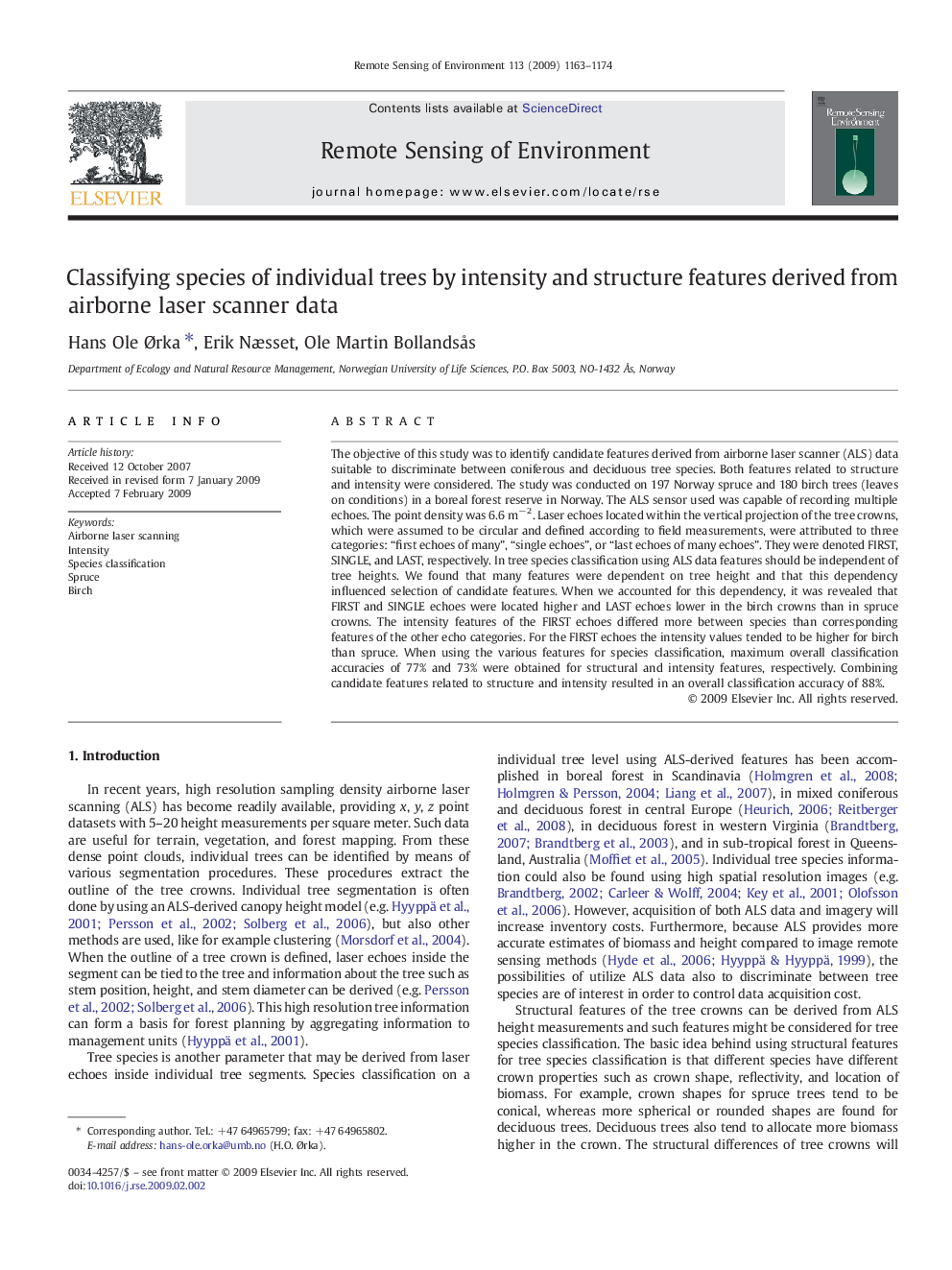| کد مقاله | کد نشریه | سال انتشار | مقاله انگلیسی | نسخه تمام متن |
|---|---|---|---|---|
| 4460223 | 1621315 | 2009 | 12 صفحه PDF | دانلود رایگان |

The objective of this study was to identify candidate features derived from airborne laser scanner (ALS) data suitable to discriminate between coniferous and deciduous tree species. Both features related to structure and intensity were considered. The study was conducted on 197 Norway spruce and 180 birch trees (leaves on conditions) in a boreal forest reserve in Norway. The ALS sensor used was capable of recording multiple echoes. The point density was 6.6 m− 2. Laser echoes located within the vertical projection of the tree crowns, which were assumed to be circular and defined according to field measurements, were attributed to three categories: “first echoes of many”, “single echoes”, or “last echoes of many echoes”. They were denoted FIRST, SINGLE, and LAST, respectively. In tree species classification using ALS data features should be independent of tree heights. We found that many features were dependent on tree height and that this dependency influenced selection of candidate features. When we accounted for this dependency, it was revealed that FIRST and SINGLE echoes were located higher and LAST echoes lower in the birch crowns than in spruce crowns. The intensity features of the FIRST echoes differed more between species than corresponding features of the other echo categories. For the FIRST echoes the intensity values tended to be higher for birch than spruce. When using the various features for species classification, maximum overall classification accuracies of 77% and 73% were obtained for structural and intensity features, respectively. Combining candidate features related to structure and intensity resulted in an overall classification accuracy of 88%.
Journal: Remote Sensing of Environment - Volume 113, Issue 6, 15 June 2009, Pages 1163–1174